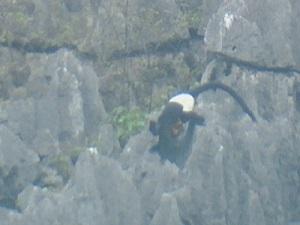Nguyen Vinh Thanh
Other projects
8 Oct 2019
Behavior and Ecology of Delacour’s Langur in Van Long Nature Reserve, Vietnam II
This project will study the ecology and behaviour of the most endangered primates in the world, and communicate to local people the importance of its conservation.

Trachypithecus delacouri (Osgood, 1932) belongs to the Colobinae, a subfamily with many folivorous adaptation characteristics, especially in the structure of its digestive system (Oates and Davies, 1994). It is an endemic species to Vietnam and one of the 25 most endangered primate species in the world (Mittermeier et al, 2005).

An isolated population of Delacour’s langur now lives in a restricted area named Van Long Nature Reserve, Northern Vietnam. This isolated population is threatened by habitat loss, hunting pressure and potential inbreeding because of genetic isolation (Nadler, 2003). Despite these threats, there has not been any study on the behaviour and ecology of Delacour’s langur in the wild so far.
Within 2 years, from January 2006 to December 2007, we plan to conduct a study on the ecology and behaviour of Delacour’s langur in the nature reserve. Our research team will consist of 4 people, divided into 2 groups. The methods used to collect data on behaviour are scan sampling with a duration of 2 minutes at intervals of 15 minutes, one-zero sampling, and ad libitum. We need to have full-day follows with scan sampling.
For study home range use of the langur, study area will be gridded on a topographic map into blocks of 100 x 100m. In each scan sampling, data of location will be recorded per 15 minutes. Plant parts eaten by the langurs will be collected for identification. Phenology will be monitored every month within study time. Food resource availability will be indirectly estimated by setting up and monitoring botanical plots. Behavioural and ecological data will be analysed using statistical software, to determine relationships between behavioural features and ecological factors (food source, weather, tourism activities, etc.).
Along with interviewing local people and local authorities, we will disseminate the necessity of the langur’s conservation to their location. Results expected from this study will contribute to the increased understanding of the ecology, behaviour and conservation of one of the rarest species in the world. The results will also contribute to improve local people’s awareness about the importance of protecting endemic species in Vietnam.